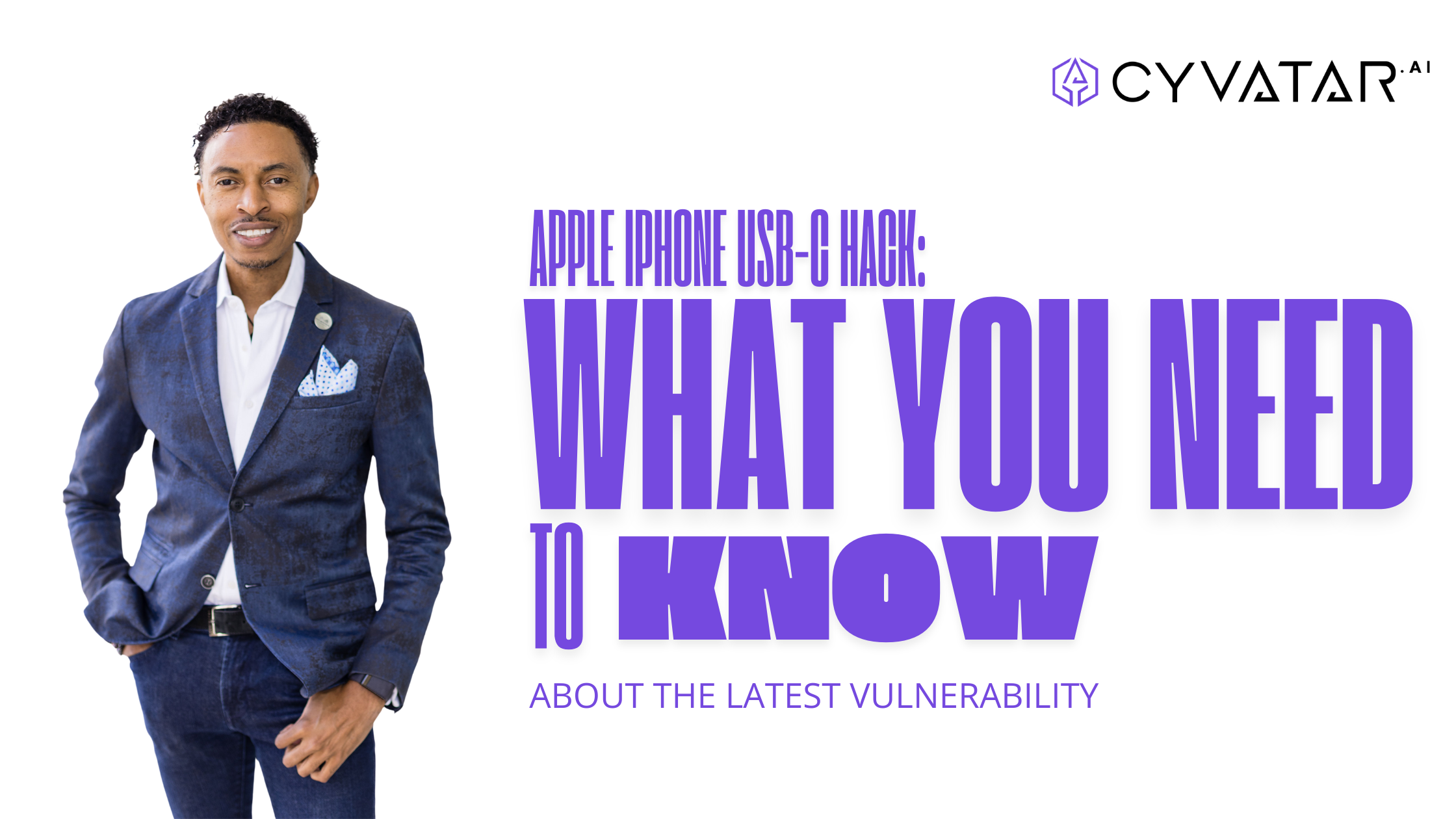Apple iPhone USB-C Hack: What You Need to Know About the Latest Vulnerability

Apple iPhone USB-C Hack: What You Need to Know About the Latest Vulnerability
Courtney Pereira | 01/13/2025In a significant development for Apple users, security researchers have successfully hacked the iPhone’s custom USB-C controller, raising new questions about smartphone security. As Apple devices continue to dominate the global market, this discovery highlights the ever-evolving landscape of cyber threats.
At Cyvatar, we’re committed to keeping you informed about the latest security risks and how to mitigate them. Here’s everything you need to know about the USB-C hack and its implications.
What Happened?
During the recent Chaos Communication Congress (38C3) in Hamburg, Germany, researcher Thomas Roth, also known as “stacksmashing,” unveiled groundbreaking findings about Apple’s ACE3 USB-C controller. This chip, introduced with the iPhone 15 series, manages USB power delivery and serves as a microcontroller running a full USB stack.
Roth used advanced techniques, including reverse engineering, side-channel analysis, and electromagnetic fault injection, to achieve code execution on the ACE3. This allowed him to extract the chip’s firmware, laying the groundwork for potential vulnerabilities.
Why Does This Matter?
The research reveals a concerning reality: even hardware components previously considered secure can become targets for cybercriminals. While the hack is currently a proof of concept with no immediate risk to users, it has opened the door for further exploration, both by researchers and malicious actors.
Key Risks Include:
- Firmware Dumping: Access to read-only memory (ROM) can allow attackers to identify vulnerabilities and exploit them.
- Juice Jacking Risks: Using public charging ports may expose devices to data compromise through malicious connections.
- Potential for Sophisticated Attacks: Nation-states and advanced threat actors could leverage this research for targeted exploits.
How Did Apple Respond?
Roth reported his findings to Apple, but their response has been mixed. For a similar issue with the ACE2 controller, Apple deemed the vulnerability a hardware problem and chose not to address it. With ACE3, the company acknowledged the complexity of the attack but downplayed its threat.
This raises concerns among security experts about Apple’s approach to foundational vulnerabilities, which could be exploited in the future if left unaddressed.
What Can Users Do to Stay Safe?
While the current risk to Apple users is low, it’s essential to adopt proactive measures to protect your devices from potential exploits:
- Avoid Public Charging Ports
Use USB data blockers or charge-only cables to ensure power transfer without data exchange. - Be Cautious with Accessories
Only use cables and chargers from trusted sources to minimize the risk of malicious hardware. - Stay Informed
Keep up with Apple’s security updates and apply them promptly to reduce exposure to new threats. - Adopt Robust Security Practices
Employ comprehensive cybersecurity solutions to safeguard your devices and data against evolving threats.
The Bigger Picture
This USB-C hack highlights the increasing sophistication of cyber threats targeting hardware. As Rich Newton, a cybersecurity consultant, put it: “This revelation emphasizes the need for robust safeguards against juice jacking and other hardware-based exploits.”
While Apple’s response may downplay the immediate risk, experts like Adam Pilton warn that access to the ROM is akin to having a blueprint for a bank. This level of insight could allow cybercriminals to identify vulnerabilities and create backdoors, potentially putting millions of users at risk.
How Cyvatar Can Help
At Cyvatar, we believe in empowering users to stay ahead of cyber threats. Our comprehensive security solutions are designed to protect your devices and data, offering peace of mind in an increasingly connected world. From Mobile Threat Defense to Endpoint Security, we provide the tools you need to stay secure.
Final Thoughts
The iPhone USB-C hack is a wake-up call for all device manufacturers and users. As technology becomes more integrated into our lives, it’s crucial to remain vigilant and proactive in addressing potential vulnerabilities.
By staying informed and adopting best practices, you can protect yourself against even the most sophisticated threats.
Ready to secure your digital life? Contact Cyvatar today to learn more about how we can help you stay protected.
Stay safe, stay secure. 🛡️
